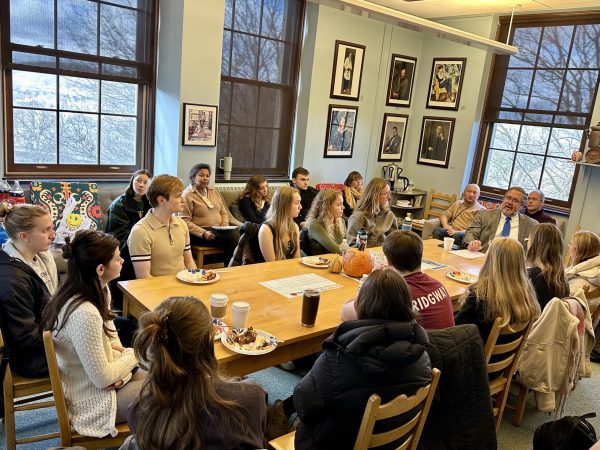Village of Hamilton’s Deer Cull Goes Into Effect
On Wednesday, December 23, the Village of Hamilton began its deer cull program to control the overpopulation of deer within the local community through. The Hamilton Deer Task Force was created over a year ago to determine how to combat deer overpopulation. After much conversation and research, the Village of Hamilton applied to the New York Department of Environmental Conservation (DEC) for permits to begin the cull. The deer cull was initially set to begin September 20, 2015, but was postponed until the Village of Hamilton received written permission from landowners to implement the cull on their property.
The cull is achieved through a “bait and kill” program, where corn is placed 20 yards from tree stands. From these stands, a bow-hunter will shoot and kill antler-less deer.
Associate Professor of Russian and Eurasian Studies and Environmental Studies Ian Helfant was among community members and Colgate professors serving on the Hamilton Deer Task Force.
“It just turned out to be more complicated than we realized, and more time-consuming to really pin down which land owners were fully supportive of the cull, which ones were willing, for example, to allow deer to be retrieved on their land, but would never have a tree stand on their land,” Helfant said. “There are relatively few people who are adamantly opposed to the cull. It’s very important that we just be cognizant of those things.”
Helfant explained which sites were being used to perform the cull.
“I think that the Village has been really quite careful … Sites have been very carefully chosen. There are basically 11 sites that are within the Village, and then there are another two sites that are on Colgate’s land on the golf course, that are also within the Village boundaries, because the nuisance permit is only applicable within the confines of the boundaries of the Village, so not the Town of Hamilton, just the Village of Hamilton … which is about two square miles,” Helfant said.
Helfant also discussed the relative success of the program within its first month.“The last I had heard is that 15 deer had been taken by the cull in three weeks or so,” Helfant said.
In addition to being a part of the deer task force, Helfant is a participant in the cull program as a bow-hunter on Colgate’s property.
“Of those [15 culled deer], I’ve taken three because I’m one of the three Colgate cullers. And of the three I took, I kept one and then I donated two: one to the Hamilton Food Cupboard … and then I donated another one to a local deer hunter who didn’t get any deer this year,” Helfant said.
In addition to keeping an open dialogue with community members, Helfant has kept watch over “Nextdoor Hamilton,” which is an online community forum. His students in ENST 390, a Community-Based Study of Environmental Issues, will go through the information Helfant compiled on reactions to the cull as part of their research for the class.
“I really want to have a good sense of how different people feel about the cull. I’m hoping my ENST 390 students will, for example, look back at any updated dialogue about the cull,” Helfant said.
Overall, Helfant feels the community’s response to the cull has been positive.
“The general take-away message from those forums is that most people are supportive. But the people that are opposed to the cull feel very strongly and passionately,” Helfant said.
The Village of Hamilton will continue to evaluate the success of the deer cull program as additional analysis is completed in the months following the cull, which will finish in March.





